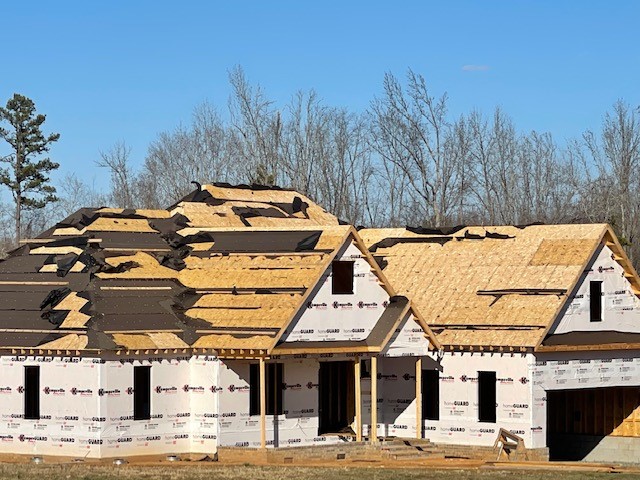Types of Roofing Underlayment.
You aren\’t able to see roof underlayment once your top layer of roofing, asphalt, metal, slate…) has been installed, so the importance of this layer of protection is often not top of mind for homeowners. It should be!
There are 3 main types of roofing underlayment to choose from, and each comes with benefits and draw backs. You may know it as felt paper or maybe tar paper, but this asphalt-saturated felt layer comes in 15# and 30# thickness and has been used for waterproofing homes for years. Synthetic roof underlayments are made from polypropylene or polyethylene and are newer on the scene, but most professional roofing contractors swear by them. Polymer-modified bitumen (Ice and Water) has it\’s place on each and every roof. Ice and Water membrane is a self adhering underlayment which seals directly to your roof deck. So which is best for your roofing project?
How Does Each Underlayment Stack Up?
Felt paper has been used for +/- 170 years and protected millions of homes. Horses and carriages have transported a lot of people, and millions have watched movies on VHS. My point is that technology advances and allows for major improvements. One thing to know about felt/tar paper is that it\’s water resistant, but not water proof. 15# felt is rated at 6 perms and 30# is rated at 5 perms when dry, but when wet, i.e. humidity or missing shingles, that rating can go as high as 60 perms.
Most synthetic underlayment options have a perm rating of less than 1 perm and are considered impermeable. Grace Ice and Water is rated at .5 perms. Synthetic Underlayment has been around since the early 2000\’s and has become the trusted material to be used as your homes last line of defense from the elements. One of the biggest benefits of synthetic underlayment, to both homeowners and roofing contractors is how tear resistant it is. Felt paper is very delicate compared to synthetics, which allows damage during installation and an added risk for shingle installers when walking on your roof. In my 27 years as a roofing contractor I have fallen off of two roofs. One was a ladder mishap, and the other was because felt paper ripped out from under me. It is DANGEROUS! Ice and water is not as tear resistant as synthetic underlayment, but as it is adhered to your roof deck at 3 lbs/ inch width, it is unlikely to be damaged or rip out from under your roofer once installed.
Ice and water membrane is the most expensive underlayment option, but outperforms felt or synthetic in certain situations. Ice and water should be used along all rake edges, in valleys, around protrusions such as skylights, plumbing vent pipes and chimneys, and at all roof to wall connections. It also needs to installed on all low slope (2/12 to 4/12) roof sections. While some of these locations are code or manufacturer requirement depending on jurisdiction and climate, some are just good practice.
The Pro Choice
At MCSquared Roofing we know that felt paper is a dying material technology. We use a combination of synthetic underlayment on all sections of roofing at a 4/12 and above, while using a ice and water membrane in all valleys, eves (gutter edge), and protrusions to unsure your whole roof system lasts for decades and give you the piece of mind that a new roof should provide. If you look at a bid from a roofing company that is offering felt paper underlayment, they are likely trying to cut corners in places they think you won\’t notice.
Sign up for your free roof measurement report at MyRoofer.com or call us anytime at 1-336-988-ROOF (7663)

